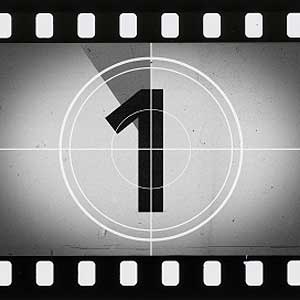If further proof were needed that revolutionary terrorists are basically narcissists, it can be found in Carlos, a monumental, and absolutely mesmerizing, film about Ilich Ramirez Sanchez, the notorious Venezuelan bomber and radical known as Carlos the Jackal.
Director Olivier Assayas‘ five-and-a-half-hour epic, which will be shown in three parts on the Sundance Channel beginning Oct. 11, followed by a simultaneous theatrical and video-on-demand release starting Oct. 15, is a powerful and complex look into the mind of a terrorist and the entities — governmental and non — that supported him.
Brilliantly portrayed as a strutting mass of contradictions and egotism by Venezuelan actor Edgar Ramirez, Carlos works dazzlingly on a number of levels: as an almost nostalgic portrait of a bygone era when groups with acronyms like PFLP, PLO, ETA and RAF terrorized Western Europe; as a flat-out, commercially viable, sex-and-guns flick, with plenty of explosions and hot Eurobabe Marxists; and as a complex look at a man with convictions who decided the best way to fight for justice — and to make a name for himself — was through “revolutionary discipline” and “armed struggle” rather than the boring, slow-moving nitty-gritty of mass political action.
It’s all here. The 1970s and early ’80s “Axis of Evil,” including Syria, Lebanon, the Soviet Union, East Germany, Iraq and other “socialist states,” which supported Carlos. The internal politics of a panoply of terrorist groups, often with different aims and strategies although sharing a hatred of the “Zionist entity” Israel. The love affairs and wild lifestyle of the charismatic Carlos, so attuned to media coverage that a character in the film exclaims, “Without newspapers, you don’t exist.” And the nail-bitingly fabulous middle section of the film, as good as any top-grade thriller, which recounts the spectacular 1975 raid in which Carlos and several cohorts attacked OPEC headquarters and took the world’s oil ministers hostage, then spent the next two days flying back and forth between Algiers and Tripoli as they tried to cut some sort of ransom deal and find a country that would give them asylum.

An occasional look at movies that matter.
It’s a terrific, world-class piece of filmmaking. But amid all the sturm und drang, a serious message emerges. Despite years of high-profile bombings, murders and kidnappings, Carlos and his pals accomplished … absolutely nothing. Israel is still Israel. The Basque region is still part of Spain (in fact, the ETA recently renounced violence). The Berlin Wall fell, and whatever the Carloses of the world were doing became instantly irrelevant (a point made in the last third of the film, as Carlos becomes an embarrassment to his former employers).
Same as it ever was. The terrorists who assassinated Czar Alexander II didn’t advance the cause of Russian reform. The Weather Underground didn’t end the Vietnam War. And Carlos and most of his cohorts are either in jail (Carlos is serving a life term in a French prison), on the run, dead or retired from the “struggle.”
Compelling in every single frame, Carlos also makes a cogent point: Political change doesn’t come from the acts of single-minded terrorists with their eyes on media coverage. It comes from the sloggers and organizers who create populist political movements.
“Art and Copy” on PBS
The real-life “Mad Men” are the subject of Art and Copy, a documentary that will be shown on PBS on Oct. 26. Although director Doug Pray’s film makes no bones that a lot of advertising is annoying, uncreative and utterly ubiquitous — the average American sees 5,000 commercial messages a day — the film sets out to celebrate the industry’s most legendary creatives, the men and women who brought art to advertising.
And they’re all here. Mary Wells Lawrence of Wells Rich Greene, who developed the “I Love New York” campaign. Hal Riney, he of the “It’s morning in America” Ronald Reagan for President spots. Lee Clow of TBWAChiatDay, whose “1984” ad for Macintosh, directed by Ridley Scott and broadcast during the Super Bowl, is widely regarded as one of the best, if not the best, ads ever produced — and it never showed the product it pushed. David Kennedy and Dan Wieden, creators of the award-winning “Just Do It” Nike campaign. And the charismatic star of the show, the foul-mouthed, tough-talking Bronx native George Lois, whose Esquire covers and “I Want My MTV” campaign are industry standards.
All these folks talk lovingly of their work, and how good advertising can rise above pure commercialism and become museum-worthy. A number were rebels of a sort, like Wells Lawrence, who trained as an actress, founded her own agency, and became the first female CEO to have a company listed on the New York Stock Exchange. None make excuses for bad or boring work, or the excesses of the business.
Ultimately, the message of Art and Copy is stated in one of the documentary’s final scenes, when Clow holds up some works by Toulouse-Lautrec, which were originally poster ads for various Parisian bars and theaters. They are now considered great art, and when Clow then shows his latest creation, the iPod ads that feature dancing, dark-silhouetted characters against brightly-colored backgrounds, the point is obvious — someday, these too may be hanging on a museum wall.




